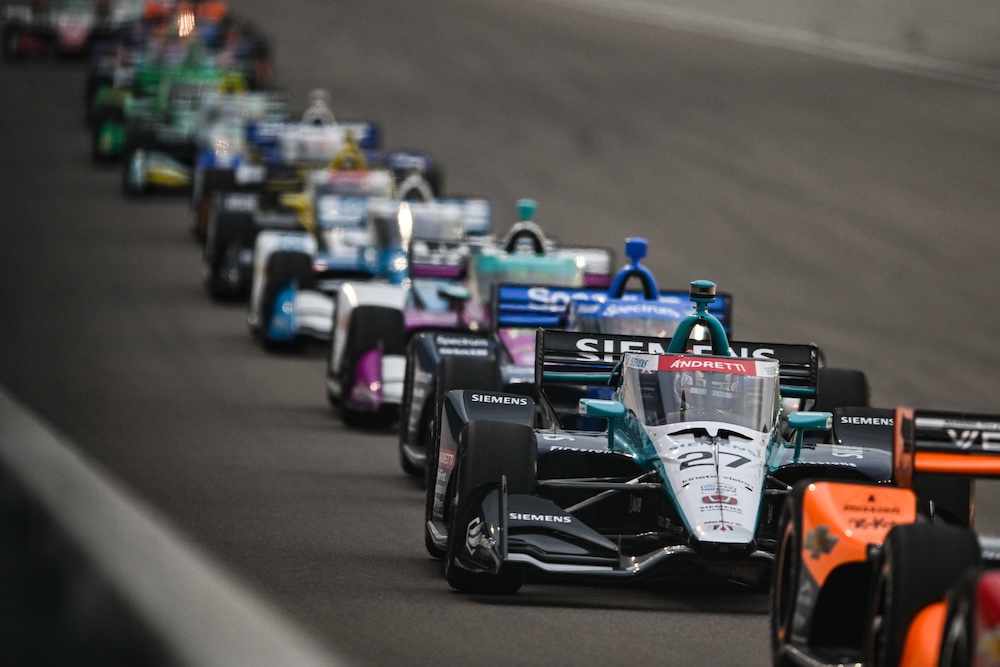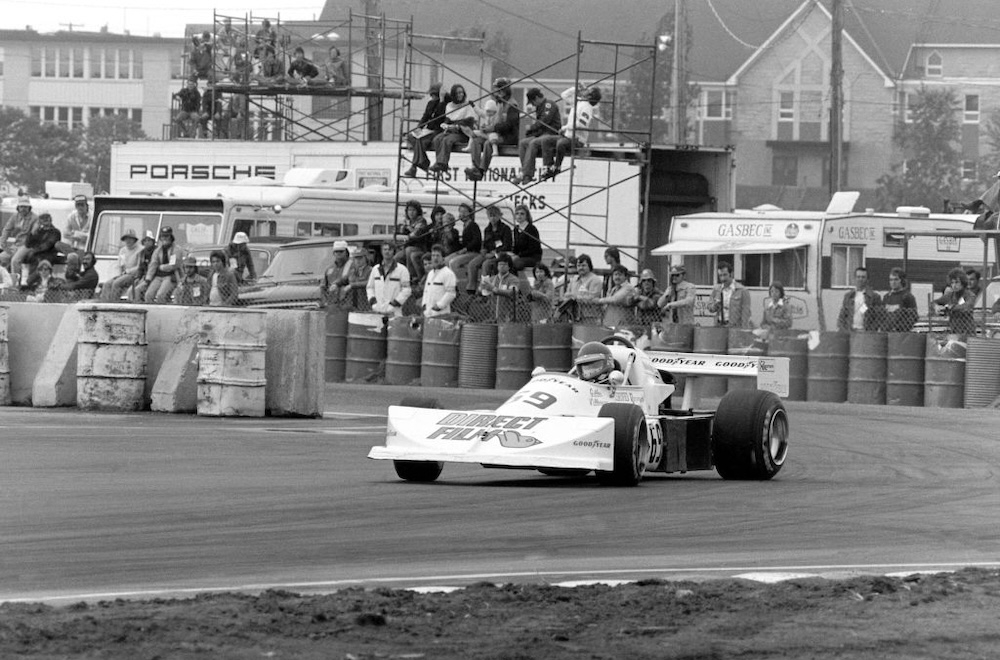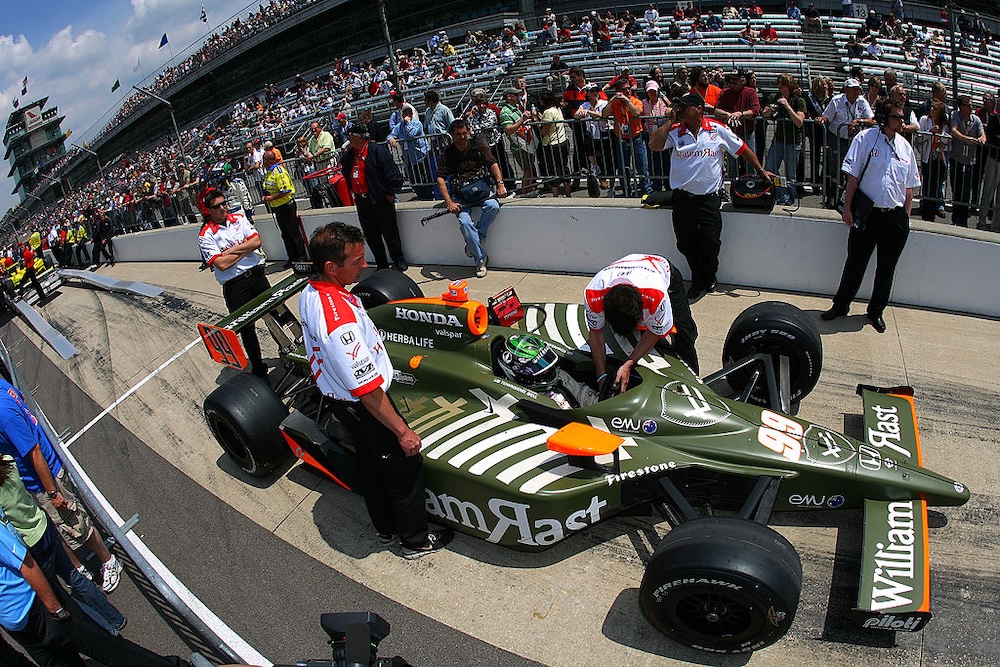Welcome to the RACER Mailbag. Questions for any of RACER’s writers can be sent to mailbag@racer.com. We love hearing your comments and opinions, but letters that include a question are more likely to be published. Questions received after 3pm ET each Monday will be saved for the following week.
Q: Conspiracy theory: Would Colton Herta be in F2 right now if Will Power was not available? It feels like Dan Towriss used the opportunity to move Herta out of the IndyCar seat into an F2 seat with no guarantees for F1 or past his contract. I don’t know what Bryan Herta’s relationship is with TWG moving forward, but did Towriss take this occasion to cleanse the organization of everything Andretti?
Mark, Milford, OH
MARSHALL PRUETT: I wouldn’t want to rob you of a conspiracy theory, so let me propose another one:
TWG Motorsports started paying Colton like he was a F1 driver a few years ago when they were confident they’d be buying an existing team and moving right into the world championship. It’s been rumored to be between $6.5-7 million per year, which was double what any other IndyCar driver was/is getting paid. Herta wasn’t an IndyCar champion or Indy 500 winner when it happened so there’s no mistaking why the huge salary hike took place, since it didn’t come on the heels of a major IndyCar achievement. It was all about F1, and years later, after lots of anguish and the spending of hundreds of millions of dollars, TWG has a team on its way to F1 and a driver being paid F1-level money being readied for the role they expected him to play a few years ago, albeit with a detour to F2 to acquire the necessary licensing points.
I punched myself in the head a few times to try and make sense of the last question and it didn’t help. Colton Herta is being handsomely paid to drive for TWG, and Bryan Herta is widely credited for his contributions to Kyle Kirkwood’s success, so no, there’s been no cleansing. The opposite, actually.
Q: Last week you mentioned how ridiculous it would be if a few NFL quarterbacks had their jobs because they paid to be there. This is something I’ve thought for a long time. This affects all the top forms of motorsport, but I’ll focus on IndyCar.
If you look back through the history of the other American sports leagues you’ll see they are littered with stories of players not getting paid (you mentioned drivers who have to deal with this) and teams that show up for a year or two and then have no money and fold (Carlin, possibly PREMA). The difference is those other stories are from many decades ago, when there was little to no regulation in the leagues. Those leagues grew up and matured to what they are today. IndyCar has not. It’s the primary reason I support the charter system. It’s not perfect, but if it’s applied similar to how the other leagues use franchises, I support the attempt to avoid unprofessionalism with teams that add nothing to the series, trundling at the back for a couple years before bowing out.
With all that said, in my opinion one of the key goals for IndyCar as a series is to try to eliminate the need for pay drivers entirely. Obviously it requires increasing the popularity and ratings, but I think if that were to happen, the Leaders Circle payout should be enough to cover the yearly expenses of a team, or as close to it as possible. This ensures that every team is able to give itself a chance to win, and IndyCar could tout itself as the only series that is truly professional from top to bottom. I don’t think this a fix to its current problems, but rather an end goal for the series.
And finally, my question: Beyond getting better ratings, what do you think is a worthwhile goal for the series to strive for? Hypothetically if IndyCar saw significant growth, say it was averaging 4-5 million views per race, how do you think the new revenue should be reinvested into the series?
Max
MP: Roger Penske is a businessman first, and bought the Indianapolis Motor Speedway and series as a business move, not a charitable endeavor. But that’s been closer to its reality as the annual financial losses on the IndyCar side – which were there long before he bought everything – not only continued, but were baked in and accepted. I’ve always been told that this was something he was intent on changing, and how IndyCar needed to be treated like a proper business of its own, not just a passion play to fund from the annual profits generated by the Speedway.
So to get to your answer, the question here is whether Penske would want to take the upsized profits from a theoretical place where IndyCar’s audience is as big as you suggest and put that into the business to make it profitable, first, and then use the remaining profit to increase the Leaders Circle for the 22 entries while ignoring the other three to five entries who didn’t reach the top 22 in Entrants points?
Does Penske look at greater profit as belonging to his company, or to his company and the entrants in the series? I don’t have an answer, because we haven’t seen this happen in a big way. Fox Corporation bought into Penske Entertainment and as I recently wrote, the Leaders Circle is expected to increase by approximately $500,000 per contract to nearly $1.7 million apiece. But is that a sharing of income from Fox buying 33 percent of the series and Speedway? Probably. For how long, though?
Also, let’s say IndyCar does have a massive spike in audience size on Fox. As co-owner of the series, would Fox also pay the series it co-owns a larger amount to broadcast its races? Or was the buy-in price a one-time deal in lieu of having to negotiate against itself in the future? All the stick-and-ball sports we love use TV contracts to enrich themselves and their teams. Billions come in and a decent chunk of those billions filter down to the Packers and Blue Jays and Knicks, and so on, because all the teams are franchises that have direct business ties to their respective leagues.
But that’s not the case in IndyCar. Every team, except for Team Penske, is 100-percent independent from the league. Coyne and Shank and Carpenter and the rest all pay their drivers and employees directly and seek their own funding to compete. Minus PREMA, they all have charters as of a year ago, but those charters bring no dollars to the 10 teams on an annual basis in the form of profit sharing, TV income, ticket sales, etc.
There’s the 22 with Leaders Circles, which is great, but the main takeaway is that when the NBA signed its recent deals with NBC and Amazon Prime and ESPN for billions, its teams were on the contractual receiving end of a portion of that money. When Penske Entertainment signs new deals with whomever, there’s nothing I’m aware of that obligates Penske to spread the wealth with IndyCar’s teams because IndyCar does not have a business structure like the NBA, NFL, MLB and so on.
Makes me wonder if franchises, which were used for many years in the CART IndyCar Series and led to constant moaning, could be considered to solidify the links between the people who hold the races and the independent business owners who show up with the teams, players, staff, and equipment to contest the races.

And so begins a winter full of letters about whether IndyCar needs a franchise system. James Black/Penske Entertainment
Q: What’s the latest on Hailie Deegan’s plans for 2026? She had big plans in 2025 for taking on NXT and moving on to IndyCar. Looks like that plan fizzled – she finished tied with somebody named Tommy Smith for 14th in NXT points – and everyone below them in points did not run all the races. I watched most of the races and I believe she finished dead last in every one, and the only cars she passed either wrecked out or had a mechanical problem. She was apparently way out of her class in this type of car, and I can’t picture her returning in 2026.
Ken Smith, Fremont, OH
MP: The latest is everything you described. One and done. Graham Rahal made it plain in a call last week: You can teach a road racer to be an excellent oval races, but it’s damn near impossible to take an oval racer and train them to be an excellent road racer. She tried to take her off-road and oval knowledge and add road racing to it, and there’s no doubt she could improve year by year if she wanted to make it her future, but it was never going to happen all at once in a single season of NXT. I don’t know where she’ll go next, but it isn’t NXT.
Q: While I am not connected with Austin Riley in any way whatsoever I deeply admire his courage and drive. He is the first professional race car driver with autism and has won numerous championships at a high level. He has recently been racing in Radical Cup.
I have seen in interviews that racing is Austin’s life and that he’s really struggling next year to get funding to continue his journey in 2026. As a fan and knowing the importance of his mission especially for the autism community, I thought I would write in to let people know about him. Here is a link to his website and a YouTube link to an interview about his career and journey.
David Colquitt
MP: Thanks for sharing, David.
Q: Several months ago, Zak Brown in an interview offered his insights and suggestions for making the IndyCar Series more attractive and authentic to old-timers, current, and future IndyCar fans. One suggestion Zak offered that intrigued me was augmenting the new generation 2028 engine formula to make it sound rowdier, bolder, and more spectacular.
I believe most of that engine concept – now with the onboard hybridization system – has been built and tested, and you have seen it and heard it on track. If it remains a 2.4L V6 twin-turbo engine, does it sound louder and more audacious to you than the current engine.
If the new engine formula regulations haven’t been completely approved and codified at this point, is it still possible – from your technical perspective – for the engineers to the tweak power unit and unleash some additional sonic muscularity, or has that train left the station?
Dale, Cedarburg, WI
MP: I’d say everybody with ears, who’s seen or heard spectacular-sounding race cars, has said IndyCar (and F1) need to choose a more evocative engine formula, so everything Zak said is both accurate and a long-held refrain that’s been spoken by many for more than a decade.
IndyCar’s 2.4L TTV6 sounds the same as today’s 2.2L TTV6. It isn’t louder, and isn’t more audacious.
The 2028 formula is effectively completed, and the only ways I know of to make a turbo V6 racing engine sound great is through stuffing a hellacious amount of boost through the motor – to help it rev like a rolling explosion – or to dial the revs up beyond the 12,000 we’ve had since 2012.
IndyCar could do both things by mandating giant boost figures and peak revs of 15,000, and it would have no engine suppliers because the high-boost formula would cost a fortune to support, and so would the hike in revs. Granted, we’d love it. Our ears would be happy. But nobody would want to pay for one or both to come to reality.
Only other solution for sound is to go away from the small-turbo V6 formula, and that would send Honda packing. I bet Chevy would love the challenge of stuffing a smallish naturally aspirated V8 into the next-generation car, but that would require a complete redesign of the chassis and push its debut back by a year or two. If you love the sound of today’s IndyCar, it’s staying. If you don’t, it’s not going away unless the series makes a bold decision.
Q: Next year will mark the 50th anniversary of Gilles Villeneuve winning the Formula Atlantic race in Trois Rivieres, Québec, which led to a McLaren F1 seat and his road to Maranello. Enzo Ferrari even compared him to Tazio Nuvolari! Do you have any memories of the races there as a young mechanic?
Yanie Porlier
MP: Villeneuve died before I could see him in person, but he’s been in my top five of all-time drivers since I learned of him and watched his races on VHS in the mid-1980s. Didn’t have many trips to good old Three Rivers, but I loved the region and the race.
I’ve written about a few Trois Rivieres memories in the Mailbag before, including going through the McDonald’s drive-through to get lunch for our Genoa Racing crew, ordering in English, and hearing and almighty panic erupt in French as the kind folks were thrown an unexpected curveball by yours truly. They eventually found someone who spoke English to help me, but Lord, the reaction was like someone from outer space rocked up and tried to order in an unfathomable tongue.
The memory I recently had, which made me smile, was of having dinner one night at a local Italian restaurant with our Italian team owner Angelo Ferro. He insisted on having a bottle of grappa brought to the table after the main course, and it just about lit my head on fire. Angelo and Tom Knapp and Michael Cannon had a solid laugh at my expense. Cherished times.

Villeneuve on his way to victory – and subsequently a shot at F1 – in the 1976 Trois-Rivieres Grand Prix. Getty Images
Q: So I just went to order Indy 500 tickets on the first day they were available to the public after renewals/applications and I could not believe the limited amount of tickets and decent seats available compared to years before when I look.
I am a Turn 3 guy and normally when I buy tickets there are tickets in rows M, N, P, R, S and T available well into November. This year, on day one of sales there wasn’t anything higher than rows H or K. Which tells me a lot of people renewed and applied for tickets after last year’s race, which is awesome.


